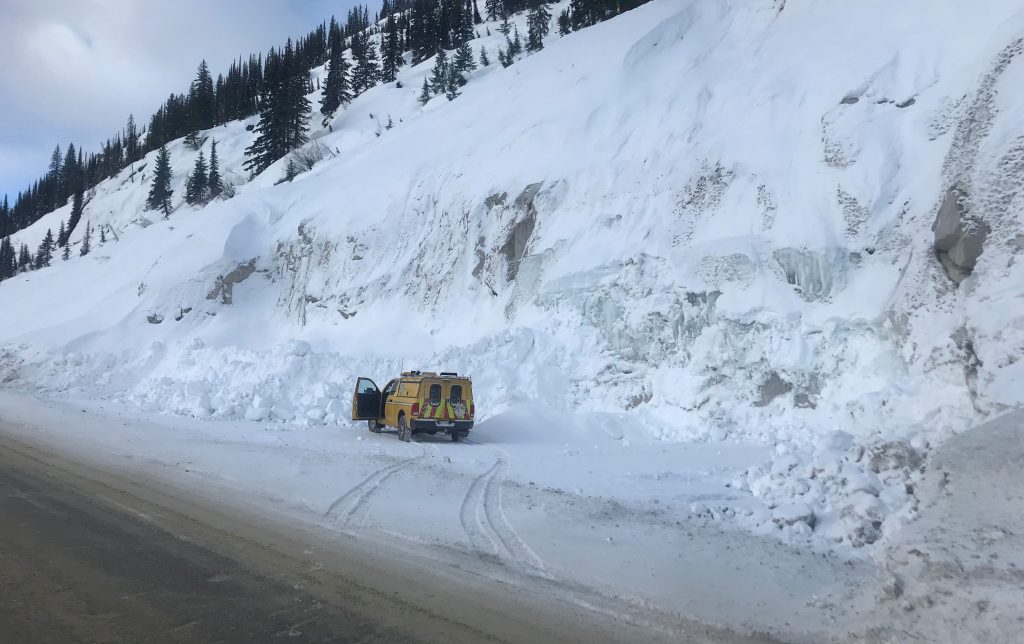
You may know of our avalanche control work to bring down snowpack that threatens highways, but did you know we create areas along highways that “catch” avalanche debris and reduce avalanche closure times?
This work is all part of keeping traffic moving safely and efficiently, in a province with 1,400 avalanche paths above mountainous highways.
“Catching” Avalanche Debris
Avalanche catchment areas help contain avalanche debris that rumbles down mountains, as a result of helicopter avalanche control, or using the O’Bellx exploders on Highway 16, Wyssen Control Towers at Three Valley Gap or Gazex exploders on Highway 3 in Kootenay Pass. They are created by digging into slopes alongside highways to create open space. The size of the catchment area depends on the size of the avalanche path or paths, the size of the potential avalanche and the terrain along the highway. They can contain tens of thousands of cubic metres of avalanche debris.
We’ve been creating catchment areas for many years and continue to improve existing catchments and create new ones annually. You’re likely to spot some on any mountain highway but we have recently constructed new catchments in the Lardeau area, Paulson Pass, and around Penticton and Pemberton. On Highway 3 at Kootenay Pass (BC’s highest mountain pass) there are two catchment areas, dug roughly 20 metres into the slope adjacent to the road. Completed in 2020, one is 100 metres long and the other about 60 metres. During the 2020/21 winter season over which about 33 controlled avalanches would normally cover the road, only 12 hit the highway due to the containment areas – a reduction of about 60 per cent!
With less of the avalanche burying the road, debris can be removed by our contractors more quickly from the road. Once the road is cleared and it’s deemed safe, traffic that was halted while avalanche control and cleanup was underway, is released to travel through. The catchment area is cleared out later – usually at the quietest times (11 p.m. to 5 a.m.) when traffic is minimal. Not only is this more efficient, it means fewer people will have to wait roadside while the road clearing is done. (FYI – avalanche closures over 30 minutes are posted on DriveBC as a Planned Event). With catchment clearing done at night, traffic can be directed through in a single lane alternating pattern, or sometimes the equipment pulls over and stops temporarily so the few vehicles can move thorough in both directions.
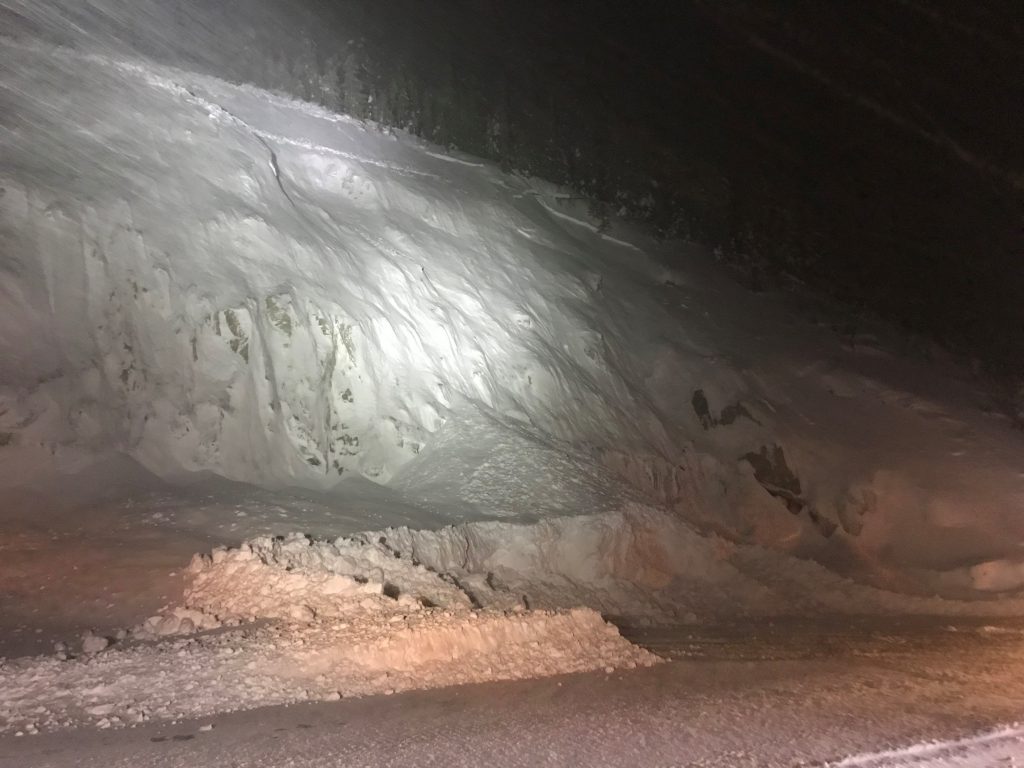
Ditches, Benches, Dams and Walls
Along the same lines, we use other terrain alterations to control and contain snow flow from avalanches. The tactic chosen depends on several factors, including the terrain adjacent to the highway, the characteristics of the avalanches that happen in the area, the type of snow (moister/heavier vs. drier) and whether traffic flows by or the area is a place where people stop.
Deeper than usual ditches are another way to reduce avalanche closure times by making cleanup quicker and getting traffic moving to its destination. They’re particularly helpful in out-of-the way areas or where there are only a few avalanches a year. Ditches require an excavator to clear, instead of the plows used for catchment areas.
In some areas and times of year on smaller slopes, snow may release naturally and fill catchment areas and ditches without affecting the highway. (Mother Nature helping to keep the highway open.)
Benches may be dug into slope sides, higher up the slope. They’re flat landing areas about 10 metres to 26 metres wide which help distribute debris, and are most effective for smaller avalanche areas. Like avalanche catchments, their purpose is to “take the energy out of” avalanche flow and reduce the amount of debris that lands on the road.
Dams and Walls may be big or small, and run alongside highways. They are designed to catch and retain much of the avalanche mass. Dams are typically constructed with soil, and walls can be constructed of reinforced concrete or other building materials.
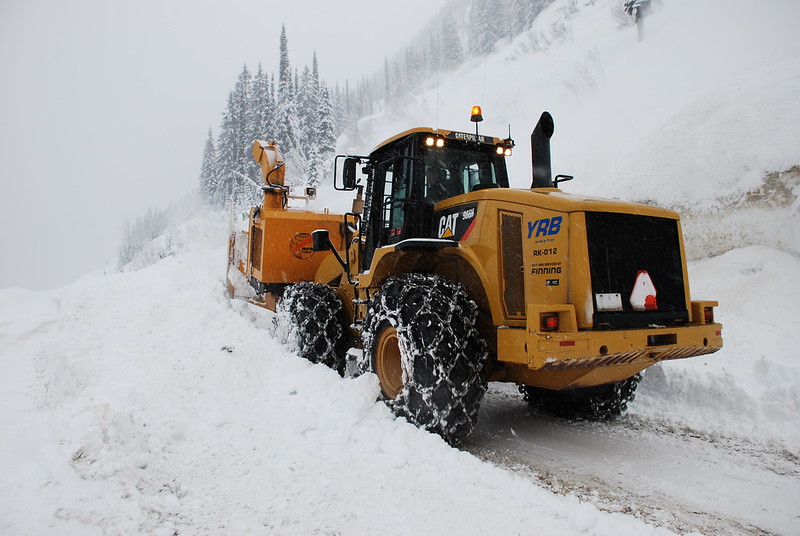
Keeping Catchments Clear
We want avalanche catchments and ditches to be ready to fully accommodate avalanche debris all winter, so as part of our maintenance contractors’ annual summer maintenance, avalanche catchment areas and ditches are cleared of rock and vegetation.
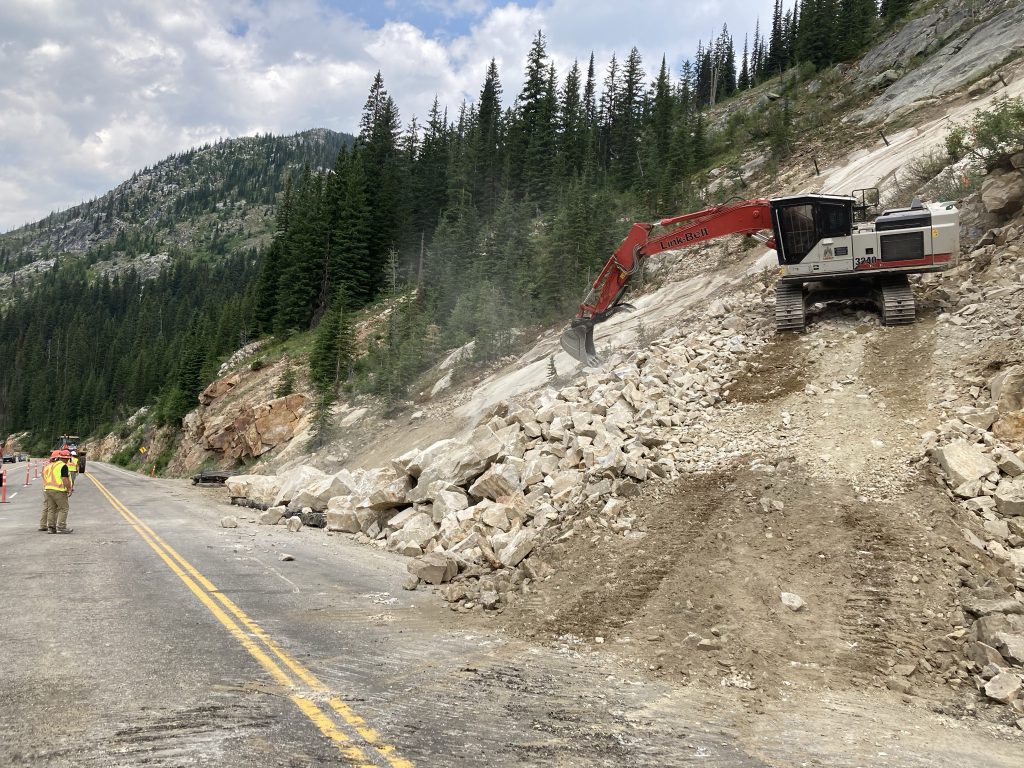
We know that avalanche closures – as necessary as they are to motorists’ safety – cause delays and inconvenience for travellers. If we can “catch” some avalanche debris, we can “release” you that much earlier to travel through the area and get to your destination.
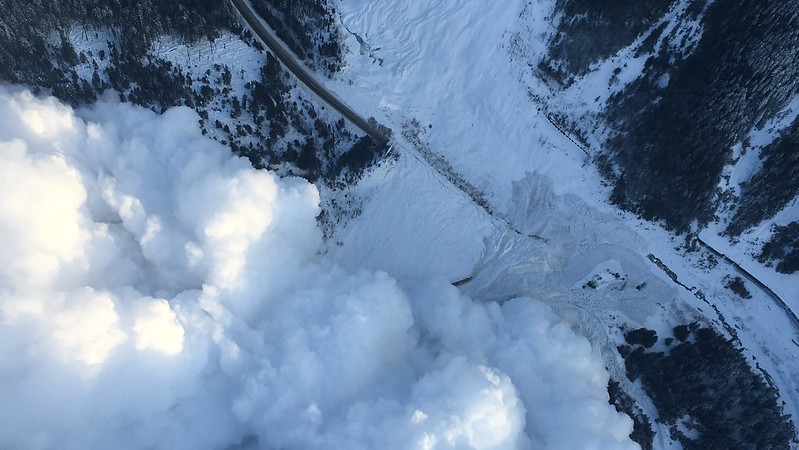
Do avalanches and avalanche control and technology intrigue you? Find out more about the systems we use to detect potential avalanches, take snow pack down when it becomes a hazard and reduce avalanche closure times and inconvenience for highway travellers:
- Our Automated Avalanche Detection System at Bear Pass on Highway 37A uses radar to detect ice and snow movement, at this area that has about 600 avalanches a year.
- O’Bellx exploders along Highway 16, that look likeR2D2 from Star Wars, are the first to be used in Canada and can be installed in places that other systems can’t be.
- Our YouTube channel has powerful videos of avalanches being brought down by our avalanche personnel and equipment.
- More blogs about our avalanche work: https://www.tranbc.ca/category/emergency-information/bc-avalanche-program-emergency-information/
Join the discussion